The Soviet Union
This article is still under construction. Some things might be missing.
Union of Soviet Socialist Republics (RUS: Союз Советских Социалистических Республик) commonly known as the Soviet Union is a country located in Northern Eurasia. It is the largest country on Earth by area and extends across eleven timezones. It is organized as a federal union between fifteen republic states. It is characterized by it's diverse cultures, one-party rule and commanded, algorithm-managed economy.
History
Kosygin-Podgorny Era
Almost everything beyond this point is alternative history. Do not take anything you see here seriously!
Beginning in March 1964, Supreme Soviet presidium chairman Leonid Brezhnev with his colleagues and the state security services have been plotting against the at that time Soviet leader Nikita Khrushchev. Following his swift removal from power the highest poitions withing the state apparatus now belonged to Brezhnev, Alexei Kosygin and Nikolai Podgorny as First Secretary, Premier and Chairman of the Presidium respectively. The collective leadership once again entered a troika, which they believed would benefit the Soviet Union more than the one-man rule of the previous regime. Despite an original common goal, factionalism withing the party quickly became apparent. The faction of conservatives which sought to establish a strong, centralized government was led by Leonid Brezhnev, faction of reformists who wanted to improve the economic situation in the Soviet Union was led by Alexei Kosygin and the technocrats who wanted government positions to be employed based on skill and knowledge, not political loyalty, were led by Nikolai Podgorny.

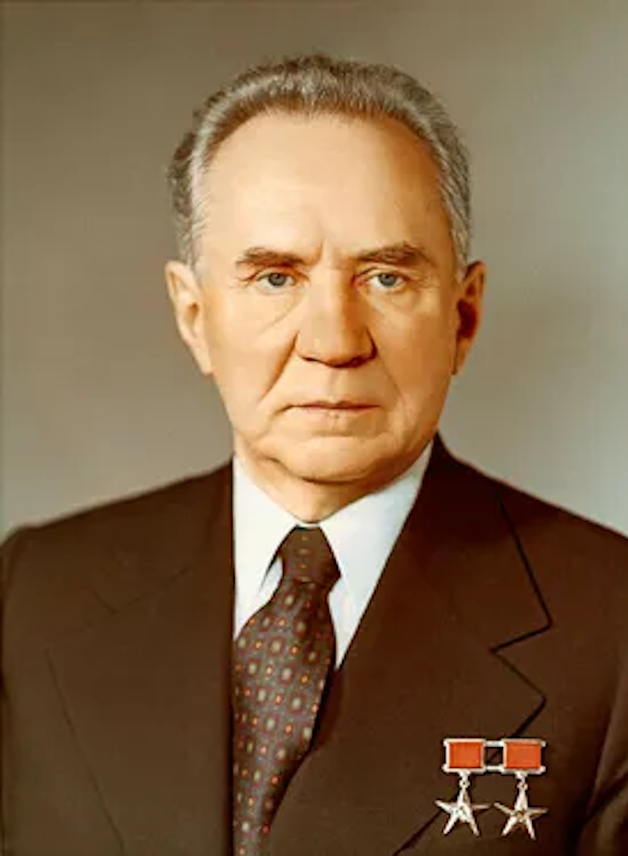
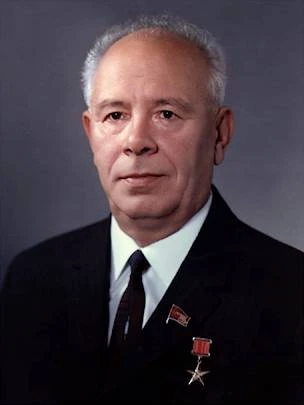
The most tension was between Brezhnev and Kosygin who both had compleately different ideas for the future of the USSR. Kosygin reportedly went as far as calling Brezhnev's ideas "resurgence of Stalinism". In turn, Brezhnev published an article in Pravda criticizing Alexei Kosygin for being an "idealist". Leonid Brezhnev later led a plot to oust Kosygin and Podgorny from office which never took place. Because of their similar ideas, Nikolai Podgorny and Alexei Kosygin formed an infromal alliance that sought to take Brezhnev down. They both saw him as a threat to their own positions in power and knew that they had to take him down as soon as possible.
Conflict within the CPSU reached it's peak in September 1965 after Kosygin presented his economic reform plan, based on the works of Lev Gatovsky and Evsei Liberman, to the Party at the plenum of the Central Committee of the Communist Party of the Soviet Union. Brezhnev and his faction accused Kosygin of trying to introduce capitalism to the Soviet economy. Conservatives began attacking Kosygin and his colleague in press and calling for his removal. Despite criticism within the Communist Party, the reform plan received a green light from the central comitee. Its implementation began in earnest in 1966.
With the first successes of the new economic reform the popularity and authority of Kosygin withing the Comunist Party and the state rose up. Multiple high ranking figures, such as Nonna Muravyova and Anastas Mikoyan, began praising his reforms. On the 29th of December 1966 Alexei Kosygin called an emergency meeting of the Central Comitee in absence of Leonid Brezhnev. Alexei Kosygin, Nikolai Podgorny and multiple other technocrats and reformists accused Brezhnev and his faction of corruption, anti-Party activity and disrupting the implementation of economic reform. Under the pressure from the government Brezhnev announced his retiration five days later. Other officials loyal to Brezhnev followed in his wake and resigned from their posts in fear of their reputation being harmed, although some, such as Dmitry Ustinov, stood their ground and were removed from office forcefully. After what became known as the "New Year's Case" the conservatives began losing prominence withing the Communist Party with the reformist and technocrat factions eventually emerging victorious from the power struggle. Following Brezhnev's removal Nikolai Podgorny took his place as the First Secretary of the CPSU.
By the end of year 1966 more and more state enterprises began adopting the Kosygin Reforms due to its immense success. The Kosygin reform aimed to address inefficiencies in the Soviet planned economy by introducing elements of market mechanisms, such as:
Kosygin managed to balance adherence to Marxist economics with the ability to improve overall efficiency of the economic system by implementing these elements commonly found in a market economy into a socialist framework. Kosygin also wanted to increase consumer goods production and improve the overall living standards of the Soviet citizens. He hoped that by doing that the Party would regain the loyalty of the Soviet people. Reforms were gradual and with more successes more state enterprises adopted the reform program until the reforms were finally compleated around early 1970's. The result of the reform was one of the fastest economic growths in the history of the USSR, increase of avarage income by 2.5 times and the overall improvement of efficiency of the Soviet commanded economy. These reforms laid the foundation for future restructuring which compleately changed the Soviet economy.
In 1970 Kosygin commented:
- "The essence of the reform is, while perfecting centralized planning, to raise the initiative and interest of enterprises in the fullest use of production resources and to raise the efficiency of production in order to unify the interests of workers, enterprises, and society as a whole by means of the system of economic stimuli."
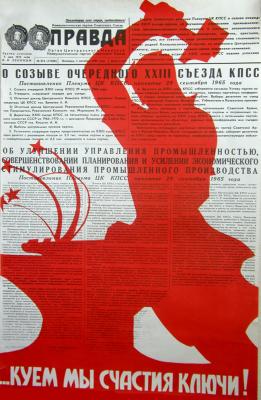

Soviet reforms later sought to combat the overall societal issues in the Soviet Union. Following the "New Year's Case" a widespread campaign against corruption which eventually introduced term limits took place in 1967 which lasted all the way until 1975. Following the 24th Congress of the CPSU, Soviet statespeople could serve up to two terms, where one term would last 5 years. The leadership would be elected by the congress every five years. A wave of liberalization followed in the entire Eastern Bloc. Dissent was tolerated to some extent and citizens were encouraged to voice their opinions in their local soviets and workplaces. Government started a campaign to encourage women to take up jobs in the government and after the Penal Code Correction and Review of 1972 which was drafted on 7th of June by the Supreme Court of the Soviet Union officially removed article 121 from the penal code of the Soviet Union and officially decriminalised homosexuality in the USSR. Culture and arts were no longer bound by ideological constraints and artists had much more freedom of expression compared to the previous regimes.
Podgorny introduced his own reforms and changes to the Soviet mode of governance. Nikolai Podgorny developed the ideas of "Socialist Meritocracy" and "Soviet Technocracy". Government officials were to be choosen on the basis of their skills and education, unlike previously, where high ranking politicians were choosen among an elite most loyal to the Party. Ministries were employed by officials who were educated in the field the ministry was administarting. That decision was mostly implemented to combat corruption and improve the efficiency of the state apparatus. Sciences were liberalizing and aswell as artists, scientists were no longer bound by ideological constraints. The Soviet Government began investing heavily in technological reaserch. One of the main focuses of the Soviet government was also to complete the OGAS system started in the year 1962, which was finally compleated in 1979 and further expanded in later decades. Podgorny commented in 1968:
- "The Socialist world is behind Capitalist countries when it comes to technological development. We must close that gap and catch up with them. What they obtained in decades, we must achieve in years."
Soviet Union experienced a major boom in technological development. It is during the leadership of Podgorny the Soviet Union made countles major breakthroughs in sciences. To boost public support, the government promoted a romanticized view of space and technology. Soviet science-fiction genre flourished and the obsession with space lasted from late 60's to early 80's. That phenomenon has commonly been dubbed as "kosmomania". It is said that Podgorny's reforms were groundworks for the sudden second technological boom in the 80's.
Various reforms started by leaders of Soviet Republics shaped the policies of the Union aswell. Petro Shelest, first secretary of the Communist Party of Ukraine sought to make the Ukrainian SSR more economically free from Moscow. He also wanted to promote Ukrainian culture and art. His policies of decentralization later inspired multiple Kosygin's reforms, such as decentralization. Union Republics now had more free hand to manage themselves. National languages were taught in schools as primary languages in their respective republics and Russian was treated as a lingua franca and only taught as a secondary language. Efficient anti-corruption policies of Eduard Shevardnadze in Georgia, Republic most notably known for high corruption, were implemented in other republics aswell and its successes allowed Shevardnadze to climb up the Communist Party ranks until eventually becoming the First Secretary of the CPSU in the year 1990.

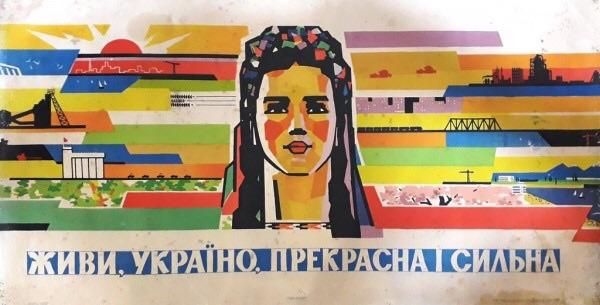
Reformist spirit quickly spread to other Socialist states. Many leaders in Soviet satellite states began their own reforms inspired by those in the Soviet Union. Most notably: János Kádár, Edward Gierek and Alexander Dubček. Although, Dubček's techniques were criticized even by Moscow to the point where in 1968 Kosygin reportedly had a private meeting with Alexander Dubček where he "advised" him to stop before the situation spirals out of control. Despite widespread enthusiasm, Soviet reforms faced much criticism from many Socialist regimes, including Albania, Romania and China.
Eventually the Soviet Union gave much more freedom in management to their satellite states. The decision to decentralize the Eastern Bloc was done because the constant economic support from the USSR to their subjects was slowing down the Soviet economy. Kosygin decided to turn the constant flow of aid into a system of "on request help" from the COMECON. Despite some relative freedoms, the Soviet Union still held a hard grip on states in their sphere of influence, often pressuring leaders to step from power or outright getting rid of them if Moscow wasn't pleased with them. An example being Władysław Gomułka in Poland who was replaced by Edward Gierek by the Soviets in 1970 after they saw that Gomułka's leadership might lead to a crysis.
Despite successes on their own soil, the Soviet leadership seriously lacked in foreign relations. Kosygin, as the head of the state, was most often criticised for his inability to fulfill his promises of a detente with the West, despite both sides signing multiple treaties which they hoped would ease the tension. (ex. SALT I and SALT II) Various reforms were seen by the Western powers as a sign of Soviet weakness and used them against the USSR as signs of flaws in the Soviet system. A prime example of Soviet foreign policy's poor performance was Kosygin's inablity to sway the Afghani president Mohammad Daoud Khan into joining the Soviet sphere of influence. Daoud Khan later officially announced Afghanistan to be a non-aligned state. Despite major failures, Kosygin managed to achieve some diplomatic successes, such as establishing good Soviet-Egyptian relations and being the mediator in Pakistani-Indian conflict.




Kosygin-Podgorny era eventually had to come to an end. Nikolai Podgorny resigned from his position as the First Secretary of the CPSU on 25 of March 1980 for unknown reasons. Eventually Kosygin announced that he won't be seeking reelection by the Central Comitee on 30th of March 1980, but he would remain in the Central Comitee until his death on December 18, 1980.
Tikhonov's leadership.
Unlike last time the leadership change did not cause any major internal conflicts within the Soviet government. Nikolai Tikhonov was choosen to hold the office of the First Secretary of the CPSU and the Premier of the Soviet Union would be Alexander Yakovlev. Tikhonov previously was the Chairman of the Central Planning Comitee and one of the figures implementing the economic reform of 1965 and the OGAS system. He was choosen due to his great management capabilities and because he promised to continue the Kosygin reforms. Yakovlev was the propaganda minister. Party Comitee believed that Yakovlev's experience as a student in the Fulbright Program would help him understand the Americans better and hoped that he would eventually ease the Cold War tensions. In fact, Yakovlev was personally recommended to the Party by Mikhail Gorbatchev, the Deputy First Secretary, and Yuri Andropov, the Chairman of the KGB.
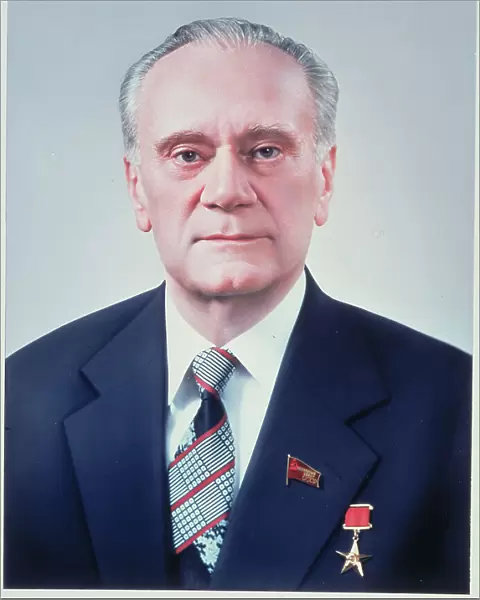
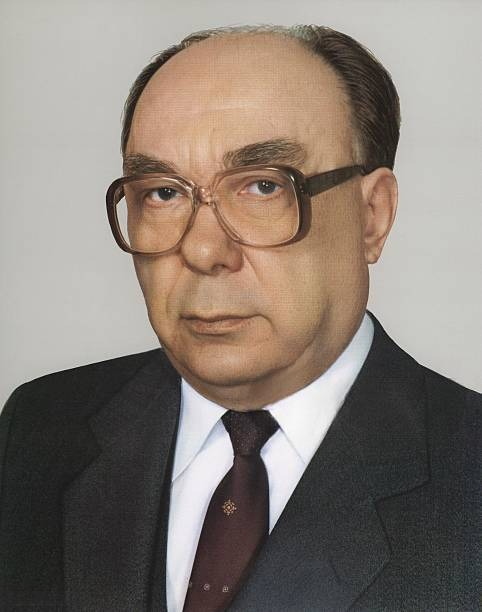
Tikhonov planned to restructure the central planning. Intrigued by the latest achievements in Soviet algorithmics, digital technology and early artificial intelligence, Tikhonov sought to expand the OGAS system into the only planning force in the Soviet Union. A nation-wide system of computers would automatically collect data from state enterprises and plan in accordance to its own estimates based on the collected data. Tikhonov wanted to introduce algorithmic systems to other fields of Soviet administration. He sought to significantly decrease the size of the Soviet bureaucracy and to curb the power of the bureaucratic elite within the Soviet government by automating various tasks and replacing some positions with machines. Tikhonov also wanted to further technological development by expanding and funding the Soviet space exploration program and the education system.
Tikhonov outlined his plans and expectations in the 11th Five-Year plan which was proposed to the Central Comitee of the CPSU on June 23, 1980. Five key points of the economic plan were:
- Costly state bureaucracy to be decreased.
- Economic growth to be accelerated.
- Efficiency of central planning to be increased.
- Technological development to be furthured.
- Living standard of the people to be increased.
Tikhonov's plan was met with criticism mainly from the bureaucratic elite of the state who saw it as a danger to their positions in power. After a long discussion and debate the plan was voted to be a go and started the next year.
It wasn't until the year 1983 when actual change was possible to be seen. Soviet Union experienced a sudden economic growth after the first OGAS expansions were launched. Computer planning and the expansion of Oil exports following the oil crisis helped the USSR strenghten its economy. Some Western economist estimate that the avarage GDP growth of the Soviet Union was around 4% to 5% in the 80's, which some even described as an economic miracle, considering that the Soviet Economy was always lagging behind the Western free market ones. Other digital networks such as Academset were expanded aswel, before eventually being merged in 1986 through 1987 into the Interset network, the Eastern counterpart of the Internet. More and more regular citizens became educated in basic computer use by mid 1980's and civilian use of the Interset became much more common after the Soviet top-level domains .su and .ссср were officially established in the year 1986.
Success of the 11th Five-Year Plan paved the path for Tikhonov to become the sole Figure of Authority within the Communist Party. He put an overwhelming amount of work into expanding the OGAS system to the point where some Soviet officials often described the Gosplan building as Tikhonov second home because of how much time he spent there.
Other reforms and programs conducted in the 80's included a campaign for the modernization and revitalization of the agriculture, an anti-corruption campaign and a campaign to combat the formation of gerontocracy in state administration. All turned out to be much or less a success with minor problems on the way.
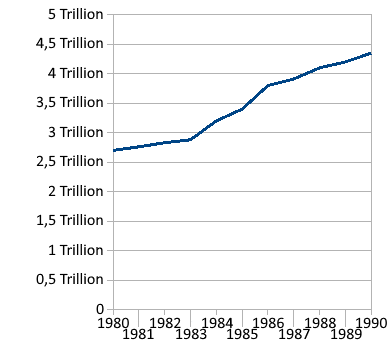

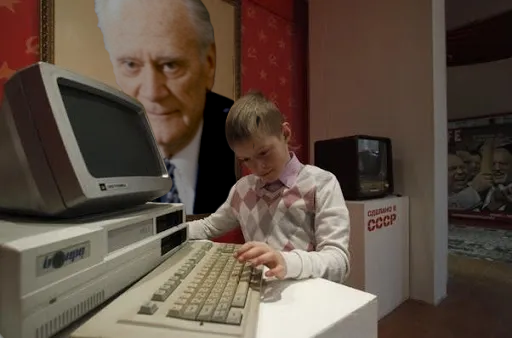
OGAS' success led to the implementation of similar systems in Soviet satellite states. It also highly alerted the US which saw OGAS as a serious threat to the Western economies recovering from the 1980 Oil Crisis, which largely unaffected the Socialist World. Yakovlev's attempts to discuss a detente with the USA were largely unsuccessful due to America's increased hostility towards Communism during the presidency of Ronald Reagan.
Nikolai Tikhonov's era ended with his retirement from politics on March 29 1990. Tikhonov's reforms contributed to a fast technological and economic development in the Socialist Bloc. The standard of living in Socialist states increased drastically and the number of errors in economic planning seriously dropped. Electrification and computer literacy in the Eastern Bloc also greatly increased in the 80's. Despite many successes Tikhonov's reforms led to a raise in unemployement in the Soviet Union caused by the automatization of state bureauocracy, which in turn led to a wave of protests in late 80's. Disgruntled nomenklatura, underpaid military and rising tensions within the Communist Party led to serious internal problems which would soon surface.
Shevardnadze and the Leadership Crisis
- Full article: 1992 Leadership Crisis
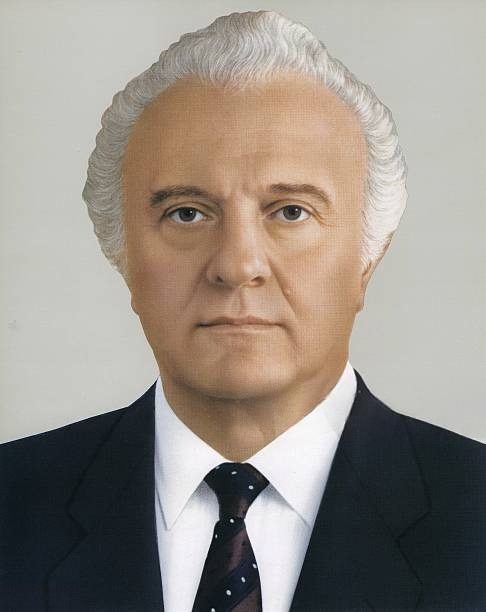
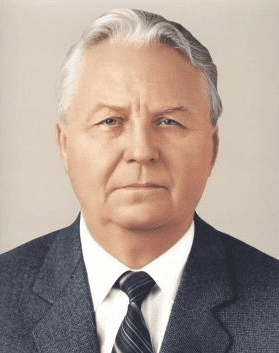
Geography
WIP
Government
WIP
Economy
WIP
Notes
- Credit for photos shown on this page goes to their respective authors, blah, blah, blah... You get the idea.
